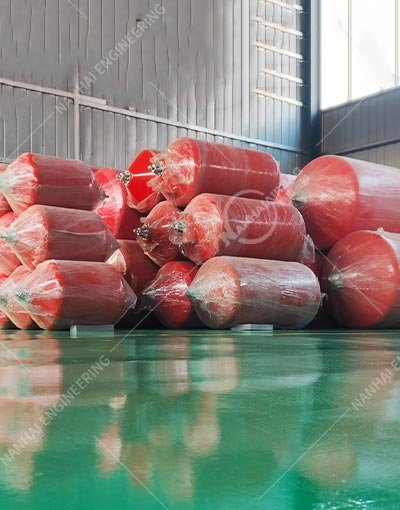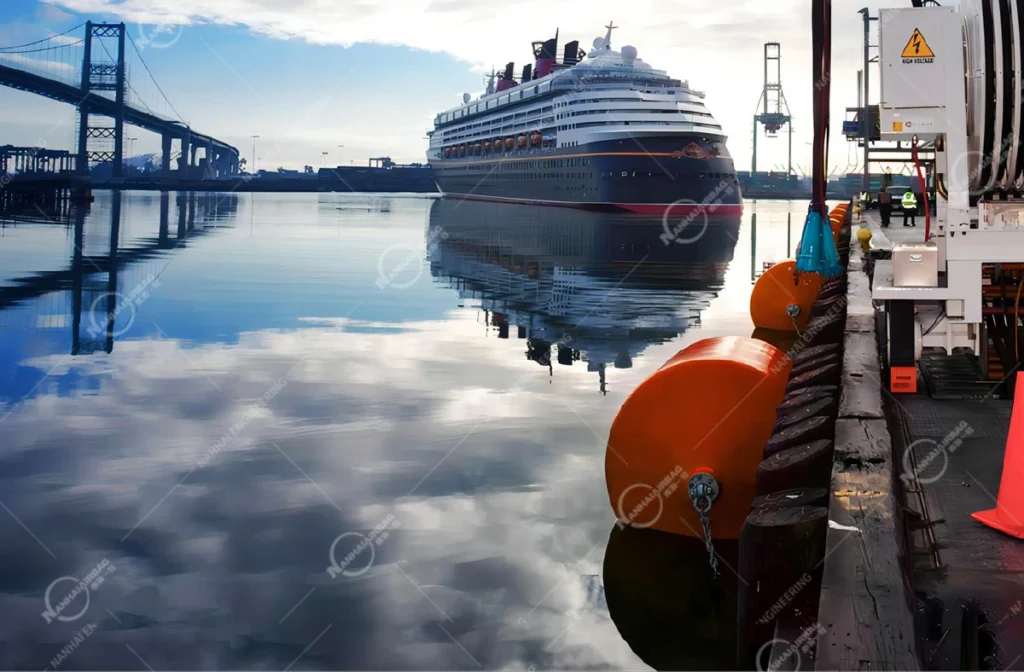D Rubber Fenders: The “Workhorse” of Marina Safety (No More Docking Headaches!)
09/09/2025W Rubber Fenders: The Workhorse of Waterfront Protection (No More Scratched Hulls!)
16/09/2025

You’re backing your 25-foot bowrider into the dock on a sunny weekend, feeling confident—until a sudden crosswind jolts the wheel. The hull slams into the pilings, and screeeech—you hear the dreaded sound of gelcoat scraping against metal. You groan, already imagining the $500 repair bill. Sound familiar? For boat owners, marinas, and anyone who’s ever wrestled a dock, foam fenders are the unsung heroes that turn chaotic docking into a breeze. Let’s dive into why these squishy, rubbery wonders are rewriting the rules of waterfront protection.
What Are Foam Fenders? (The Quick, Googly Answer)
Foam fenders are lightweight, shock-absorbing marine protectors made from expanded polystyrene (EPS) or closed-cell foam, wrapped in a durable rubber or plastic outer layer. Their soft, buoyant design acts like a “cushion” between boats, docks, and other vessels during docking or collisions. Unlike rigid rubber fenders or metal bumpers, foam fenders compress on impact, absorbing kinetic energy and distributing force evenly to prevent dents, scratches, or structural damage. Think of them as nature’s shock absorbers—built for the messy, unpredictable reality of waterfront life.
Why This Matters: When a “Small” Docking Mishap Costs Big (And Ruins Your Day)
Let’s get real: Docking isn’t just about parking a boat. It’s about protecting your biggest investment. A single hard hit can crack a hull, tear gelcoat, or even damage a boat’s engine mounts. And it’s not just yourwallet taking a hit—marinas lose customers when “rough docking” becomes their reputation.
Take Sarah, a California boater who docks her 30-foot sailboat weekly. Last year, she used rigid rubber fenders. After just 3 months, her hull had 5 deep scratches, and she’d spent $1,200 on repairs. “Every time I docked, I’d cringe,” she says. “I felt like I was gambling with my boat’s condition.”
Sarah switched to foam fenders. Overnight, her stress vanished. “The foam cradles the hull, so even if I misjudge the dock, it just bounces off gently,” she explains. “No more scratches, no more repair bills. I wish I’d switched sooner!”
This isn’t just Sarah’s story. Here’s why foam fenders are urgent for youroperation:
- •Delicate Hulls Deserve Gentle Love: Kayaks, fishing skiffs, and sailboats have thin, curved hulls. Rigid fenders (think steel or flat rubber) concentrate impact on one spot, causing dents or tears. Foam fenders’ soft, compressible design spreads force across a larger surface, shielding even the most fragile hulls.
- •Cost Savings Add Up Fast: A single hull repair can cost 500–2,000. Foam fenders reduce that risk by 80–90%, saving you thousands annually. For marinas, fewer damaged boats mean happier customers and more repeat business.
- •Ease of Use = Less Hassle: Foam fenders are lightweight (often under 10 pounds) and easy to install. No heavy tools, no complicated brackets—just place them on the dock, and they’re ready to work. Perfect for small docks, fishing tournaments, or temporary setups.
How Do Foam Fenders Work? The Science of “Docking Without Drama”
These aren’t your average pool floats—they’re engineering marvels built for marine chaos. Here’s what makes them tick:
1. Soft, But Not Flimsy
Foam fenders are made from dense, closed-cell foam (like EPS) that’s tough enough to withstand repeated impacts but soft enough to compress. The outer layer (rubber or plastic) adds durability, resisting UV rays, saltwater, and abrasion. Together, they create a “shock-absorbing sandwich” that protects your boat.
2. Compression = Force Distribution
When a boat hits a foam fender, the foam compresses slowly, spreading the impact force across the entire surface of the hull. This “squishy” action reduces peak force by up to 70% compared to rigid fenders. Translation: No more concentrated dings or cracks—just a gentle “thud” and a scratch-free hull.
3. Buoyancy = No Heavy Hardware
Foam fenders float naturally, so they don’t need bulky brackets or anchors. They stay in place thanks to their buoyancy, making them ideal for small docks, kayaks, or boats with limited deck space.
Foam Fenders vs. the Competition: Why They’re a Game-Changer
Not all fenders are created equal. Here’s how foam fenders outshine their peers:
1. Foam Fenders vs. Rubber Fenders
Rubber fenders are durable but toorigid. They concentrate impact on small areas, leading to dents or tears—especially on thin-hulled boats. Foam fenders? Their soft, compressible design “gives way” gently, protecting both the boat and the dock.
2. Foam Fenders vs. Marine Airbags
Marine airbags (inflatable rubber tubes) are rockstars for launchingor liftingboats. But foam fenders? They’re pros at protectingduring docking. No inflation needed—just place them, and they’re ready to work rain or shine.
3. Foam Fenders vs. Metal Fenders
Metal fenders (steel, aluminum) are durable but rigid. They transfer impact back to the boat, causing hull stress and dents. Foam fenders absorb and redirect energy, reducing strain on both the vessel and the dock. Plus, metal fenders rust in saltwater—foam? It’s corrosion-resistant.
People Also Ask: Your Top Foam Fender Questions
Q: How do I choose the right size foam fender?
A: Measure your boat’s hull width at the waterline (most boats need 12–18 inches of coverage per side). For kayaks or small skiffs, 12–16 inches works. For 25–30-foot boats, 20–24 inches is ideal. Larger vessels (35+ feet) need 28–36-inch fenders.
Q: Are they easy to maintain?
A: Super simple. Rinse with fresh water monthly to remove salt or algae, and inspect for cracks once a year. The foam is designed to last 5–7 years with minimal care—even in harsh, salty environments.
Q: Can they be used in both saltwater and freshwater?
A: Absolutely. Foam fenders are made with non-toxic, corrosion-resistant materials, making them safe for lakes, rivers, and oceans.
Q: Are they worth the cost compared to cheaper fenders?
A: 100%. A 50foamfendermightcosttwiceasmuchasabasicrubberone,butitlasts3–4xlongerandslashesrepairbills.OnemarinainFloridasaved15,000/year after switching—enough to buy 300+ generic fenders.
Q: Do they come in different colors?
A: Yes—most suppliers offer black, gray, or custom colors to match your dock’s aesthetic. Some even have reflective strips for visibility at night.
Final Thoughts: Don’t Let Docking Disasters Sink Your Summer
Docking shouldn’t feel like a high-stakes game. With foam fenders, you’re not just buying a fender—you’re buying peace of mind. Peace of mind that your boat stays scratch-free, your marina keeps happy customers, and your wallet avoids unnecessary expenses.
Ready to upgrade? Start by measuring your boat and dock, then check out trusted marine suppliers (look for those specializing in marine fenders). Your hull, your dock, and your weekend plans will thank you—no more “screeeech” moments, just smooth, worry-free docking.
Keywords: marine airbags, marine fenders, rubber fenders
